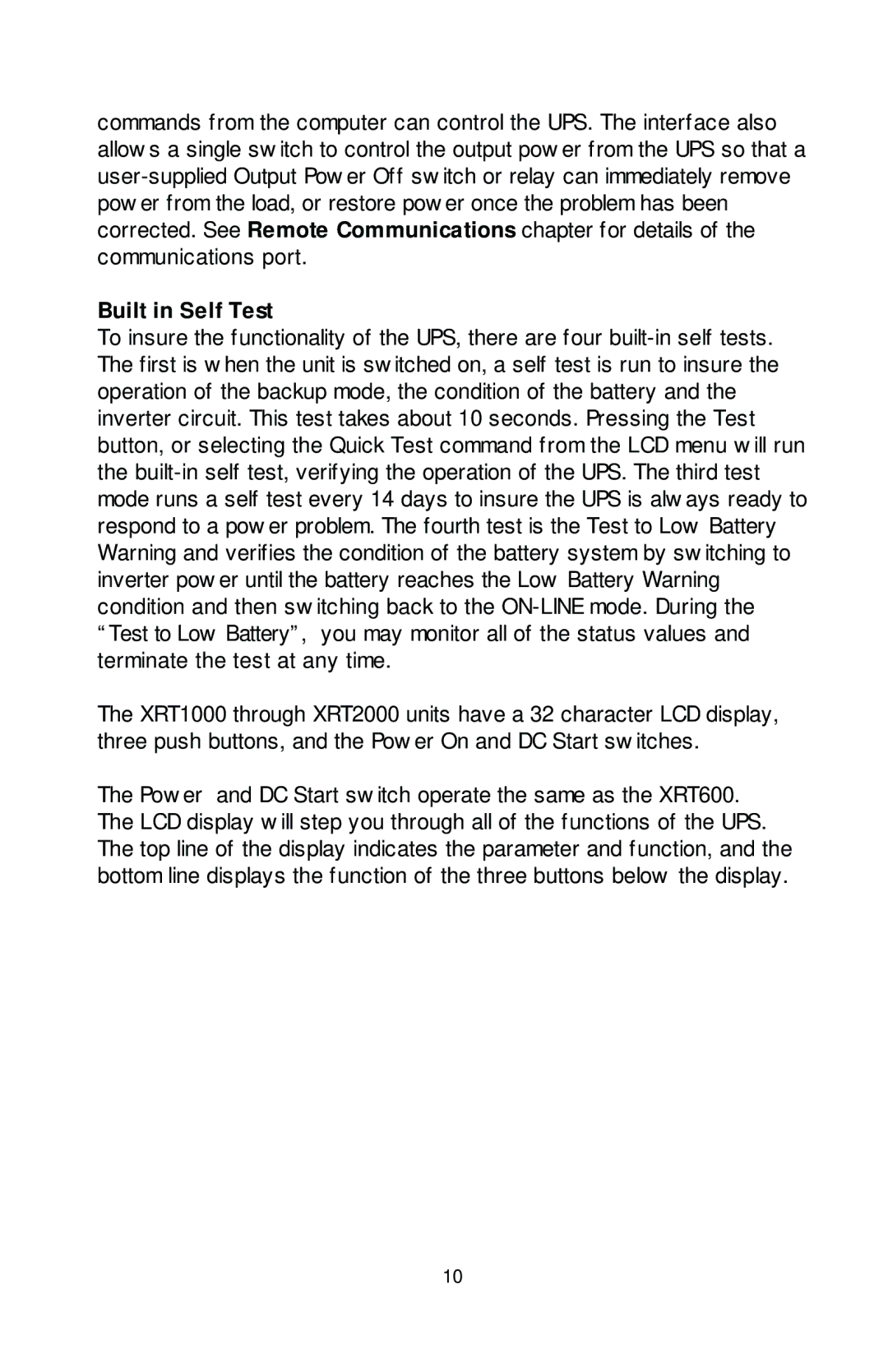commands from the computer can control the UPS. The interface also allows a single switch to control the output power from the UPS so that a user-supplied Output Power Off switch or relay can immediately remove power from the load, or restore power once the problem has been corrected. See Remote Communications chapter for details of the communications port.
Built in Self Test
To insure the functionality of the UPS, there are four built-in self tests. The first is when the unit is switched on, a self test is run to insure the operation of the backup mode, the condition of the battery and the inverter circuit. This test takes about 10 seconds. Pressing the Test button, or selecting the Quick Test command from the LCD menu will run the built-in self test, verifying the operation of the UPS. The third test mode runs a self test every 14 days to insure the UPS is always ready to respond to a power problem. The fourth test is the Test to Low Battery Warning and verifies the condition of the battery system by switching to inverter power until the battery reaches the Low Battery Warning condition and then switching back to the ON-LINE mode. During the “Test to Low Battery”, you may monitor all of the status values and terminate the test at any time.
The XRT1000 through XRT2000 units have a 32 character LCD display, three push buttons, and the Power On and DC Start switches.
The Power and DC Start switch operate the same as the XRT600. The LCD display will step you through all of the functions of the UPS. The top line of the display indicates the parameter and function, and the bottom line displays the function of the three buttons below the display.
